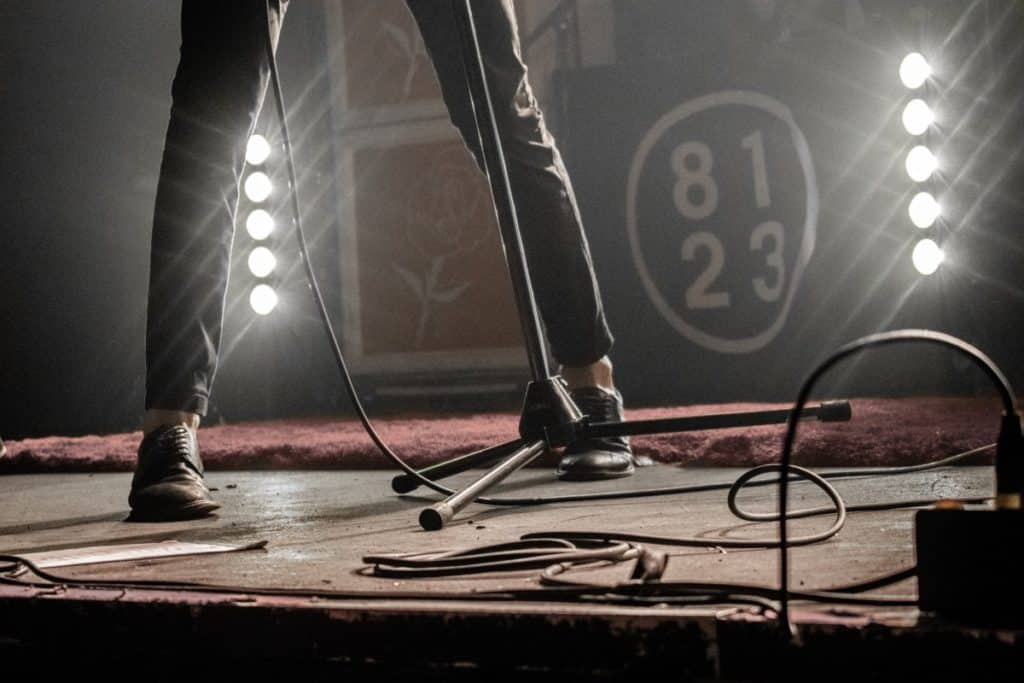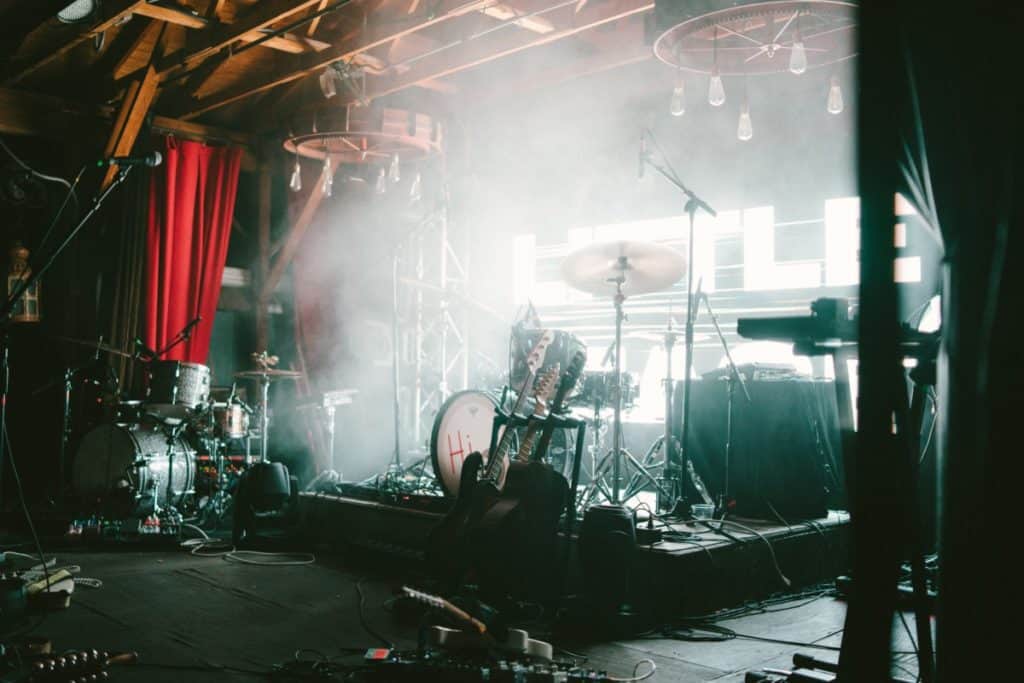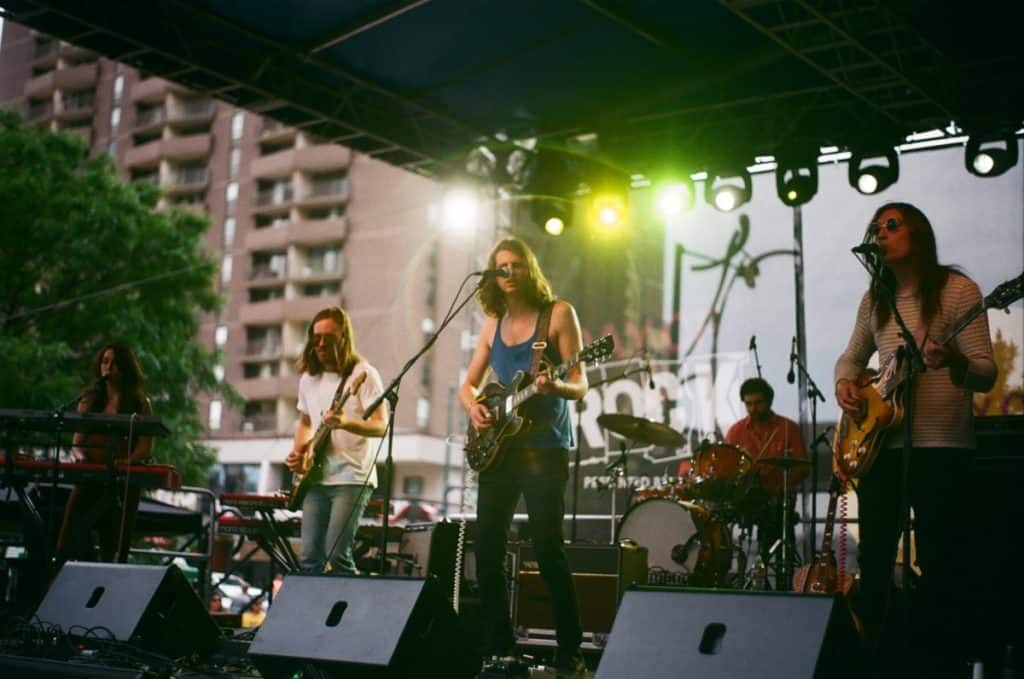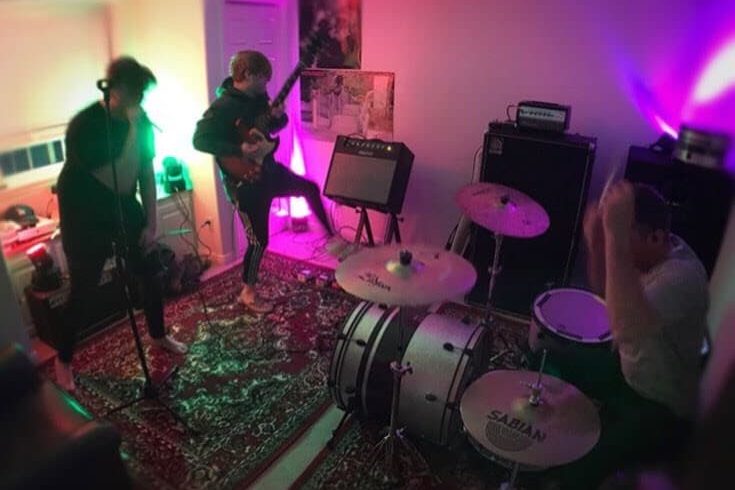At concerts and music festivals around the world, rugs are frequently used by bands and musicians on stage. Beyond the obvious decoration and visual aesthetic purposes, rugs provide important benefits to many performers. But for most people, it isn’t always clear why a band or musician would use rugs on stage.
Bands play on rugs to soften the stage, hide wires, reduce noise, and keep their instruments in place. Rugs provide traction as well as cushioning beneath musicians’ feet. In particular, oriental rugs are popular because of their stylish look and comfortable feel.
Like anything in the music industry, there are usually multiple ways to answer the same questions. That certainly applies to this situation.
The logical and practical reasons behind playing on rugs are different from the personal and particular reasons why a band would choose to do so. We’ll walk you through every reason why musicians commonly play on stage rugs.
If you’re looking to add a rug to your home studio, rehearsal space, or stage setup, check out our Resources page for our favorite rugs, rigs, and other tour-essentials.
1. RUGS PROVIDE TRACTION ON STAGE

Because stages are often made of hardwoods or metals, they are generally very hard and slippery.
Many artists spit, sweat, and spill water (or alcohol) while performing, increasing the likeliness that a stage may be slippery.
Performances also include long periods of standing or jumping, and the hard stage surfaces can quickly increase fatigue in musicians.
Bands and musicians stand on rugs to provide traction as well as cushioning beneath their feet.
Rugs also absorb liquids, hide stains, and are portable. Bands often utilize rugs on stage because they are an affordable and reliable way to eliminate many issues that frequently arise from performance to performance.
One of those frequent issues is keeping instruments and accessories in their place.
2. RUGS KEEP INSTRUMENTS IN PLACE

Many instruments are meant to be portable and have the capacity to move around the stage during a performance.
Other instruments, like keyboards, drums, and various accessories, need to be kept stationary.
Guitars utilize elaborate boards of effect pedals, keyboards rest on stands, drum kits are comprised of multiple drums and symbals — all of which need to be kept in place.
During a performance, it’s easy to gradually push these pieces out of reach, or even off-stage, because as mentioned before, the stage is slippery.
Placing these instruments and their accessories on a rug helps keep them firmly placed on stage in front of the musician.
RUGS KEEP THE DRUMS TOGETHER
Probably the most common location that you’ll see a band using a rug on stage, will be beneath the drum kit.
Unlike other traditional rock’n’roll instruments, each piece of a drum kit is adjustable. The repetitive hits and kicks to these pieces gradually push them away from each other.
A rug can provide traction beneath a drum kit, to keep the various drums and symbals close together. If the kit isn’t kept tightly together, the drummer is forced to constantly adjust the positioning of each piece throughout a performance.
A rug also helps drummers to move the entire kit at once by sliding it across the stage, instead of breaking down each individual piece.
For opening bands, moving equipment on and off stage quickly is an important part of performing.
Check out our article about why bands still need opening acts in today’s music and touring industry.
Being able to move the entire drum kit at once, to then be broken down off-stage gives the next band time and space to set up their equipment.
Check out this video that Jeremy Yaddaw did at Steve Maxwell’s about drum rugs. This exact rug is no longer available on their site, but we found one just like it over at Guitar Center.
3. RUGS HIDE & COVER STAGE WIRES

A typical stage setup can involve dozens of wires laid across the stage. This not only looks cluttered and messy but provides a major tripping hazard.
Imagine practicing for a specific performance, spending hours dialing in tones and visual effects, only to derail the entire experience by tripping over a stage wire.
Placing rugs overtop of cables and wires not only hides them but also decreases the chances that anyone will trip over them, or accidentally unplug something.
In one of my first bands, we rehearsed in a small basement bedroom at our drummer’s house.
We didn’t have any space to move or jump around and had no idea we needed to tape down or cover our various instrument cables.
When we played our first show at a local talent show, our wires were all over the stage and our singer accidentally caught his foot in my guitar cable and violently yanked the wire out the amp mid-song.
It was an embarrassing experience that quickly taught us to be more aware of the various wires on stage.
It wasn’t long after that show that we invested in a couple of dirt old black rugs at the local thrift store.
Unfortunately, technical difficulties are a common part of many performances — eventually, something will come unplugged.
In another band of mine, technical issues became so frequent we started saying things like, “It wouldn’t be a show if something didn’t go wrong.”
Introducing simple elements, like rugs, can help to keep preventable issues from happening frequently.
For many bands that are just starting out, stage rugs might seem like just a visual choice, but they can help to boost your professionalism by preventing things from going wrong, and hiding wires on stage.
4. RUGS REDUCE NOISE ON STAGE

Stages are designed to reflect sound. The placement of drums, monitors and amplifiers make the stage the loudest place in the venue.
For bands that don’t have access to expensive in-ear monitor systems, or who want to convey a more jam-style experience, reducing the noise level on stage is a critical aspect of being able to hear each other throughout a performance.
If you’ve ever been in a band, often the only thing you can hear on stage is the drums — even at a nice venue with good stage monitors.
Because it’s so hard to hear, the gut reaction of the other band members is to turn the volume of everything else up (guitars, bass, vocals) louder than necessary, just so you can hear yourself play.
At most venues, the audio technician is primarily trying to mix the sound in the venue, so the audience can hear the best version of the band.
Even when it might sound fantastic to the audience, the dynamic on stage is drastically different because the musicians are so much closer to the source of the sound.
That’s why you’ll hear singers and guitarists at bars and club shows asking the tech for more guitar or more vocals in their monitors — they can’t hear anything over the drums and the tech (in the back of the house) can’t hear what it sounds like on stage.
Rugs are a relatively cheap and easy way to begin dampening any unnecessary noise on stage — giving the band a little more control over how things sound on stage.
This is also why many open-room recording studios place rugs on the floors (and sometimes even walls) — to prevent unwanted sounds from echoing throughout the studio.
If you look at stage designs of live acoustic performances (like Nirvana’s MTV Unplugged) rugs typically cover the stage to dampen the sound and reduce echo from effecting the recording.
Of course, the best way to control the amount of noise on stage is to eliminate it.
Investing in a high-quality in-ear monitoring system makes a world of difference in how bands hear each other, and themselves.
Channeling the instrument signals through direct inputs, and delivering that to each individual band member’s ears, is like listening to a live recording of what you’re playing.
If the singer wants to hear more vocals or the drummer wants more of the backing-track, those adjustments can be made on stage, throughout the performance, by the band.
5. ORIENTAL RUGS ARE SYTLISH AND COMFORTABLE

All that said, there still remains the noticeable trend of using oriental rugs (or “Persian Rugs” as many discussion boards refer to them).
When traction, cushion, and sound reduction could easily be aquired with just a normal piece of floor carpet, it’s easy to wonder why so many bands and musicians choose oriental rugs?
For the same reason you might choose an oriental rug for your living room, bands and musicians choose oriental rugs because they like how it looks or feels.
From style to familiarity, and tradition, oriental rugs are trendy and more decorative than an inconspicuous beige chunk of the leftover cut-out from your summer remodeling project.
STYLE
The look of an oriental rug is classy and gives the band, singer, or musician extra control over their appearance on stage.
Stage design is an enormous part of being a performing musician. How things look on stage is almost equally as important as how it sounds.
A couple of tastefully placed oriental rugs can boost the overall appearance of a band’s stage setup, simultaneously creating the appearance of professionalism and creativity.
Oriental stage rugs are a subtle way for a band or musician to tell the audience that the they know what they’re doing.
FAMILIARITY
Even for seasoned performers, playing on stage in front of hundreds or thousands of people can cause nerves or feelings of anxiety.
Many musicians subconsciously utilize oriental rugs as a familiar reminder of home to help them relax and play better on stage.
When I went to the Museum of Pop Culture in Seattle, I learned that Mike McCready and the other members of Pearl Jam intentionally practice on oriental rugs, so that having the rug on stage makes performing feel more routine.
Musicians perform what they practice. Practicing, like it’s a performance, is an effective way to prepare for the real thing.
In my most recent band, Lucky Mint, we performed and rehearsed on oriental rugs for all of the reasons listed above. We liked how they looked, how familiar they felt, and the benefits they provided to us both on and off-stage.

If you practice in a carpeted room and then perform on the hard, slippery surface of a hardwood stage floor, it can feel unfamiliar and add extra anxiety to an already harrowing experience.
Alternatively, if you practice on oriental rugs and perform on oriental rugs, you’re eliminating the unfamiliar aspects of being on stage vs rehearsing at home.
TRADITION
For hundreds of years, orchestras have used rugs under the loudest percussion instruments — dampening their projection to create a more uniform sounding performance.
Possibly for no other reason, the habit of using rugs on stage has simply continued to modern musicians’ setups because frankly, that’s how it’s always been done.
Eventually, oriental rugs rose in popularity because of their visual style.
Performers like Fleetwood Mac, The Grateful Dead, Eric Clapton, Jimi Hendrix, and hundreds of others utilized the dampening, cushioning, and covering benefits with the added visual flair of oriental design.
The influence of these iconic performers has trickled down to modern bands and performers who want to look, and sound like their idols.
Continuing to uphold the tradition is potentially the biggest motivator behind bands performing on oriental rugs today.
RELATED QUESTIONS
Why do musicians play barefoot? Musicians play barefoot because the sensation is comfortable and familiar. Musicians perform what they practice, and practicing barefoot is commonplace. Alternatively, some musicians play barefoot because they like how it looks.
Is carpet good for acoustics? Rugs and carpets absorb high and mid frequencies, but not low ones, which can negatively impact acoustics. Large bathrooms, unfinished basements, empty warehouses, and parking garages often have good acoustics because the open spaces and hard-surfaces can better reflect and amplify sound.
For more industry tips and music marketing hacks, check out Ennui Magazine. You can also follow us on Facebook, Twitter, Instagram, Pinterest, and YouTube.
